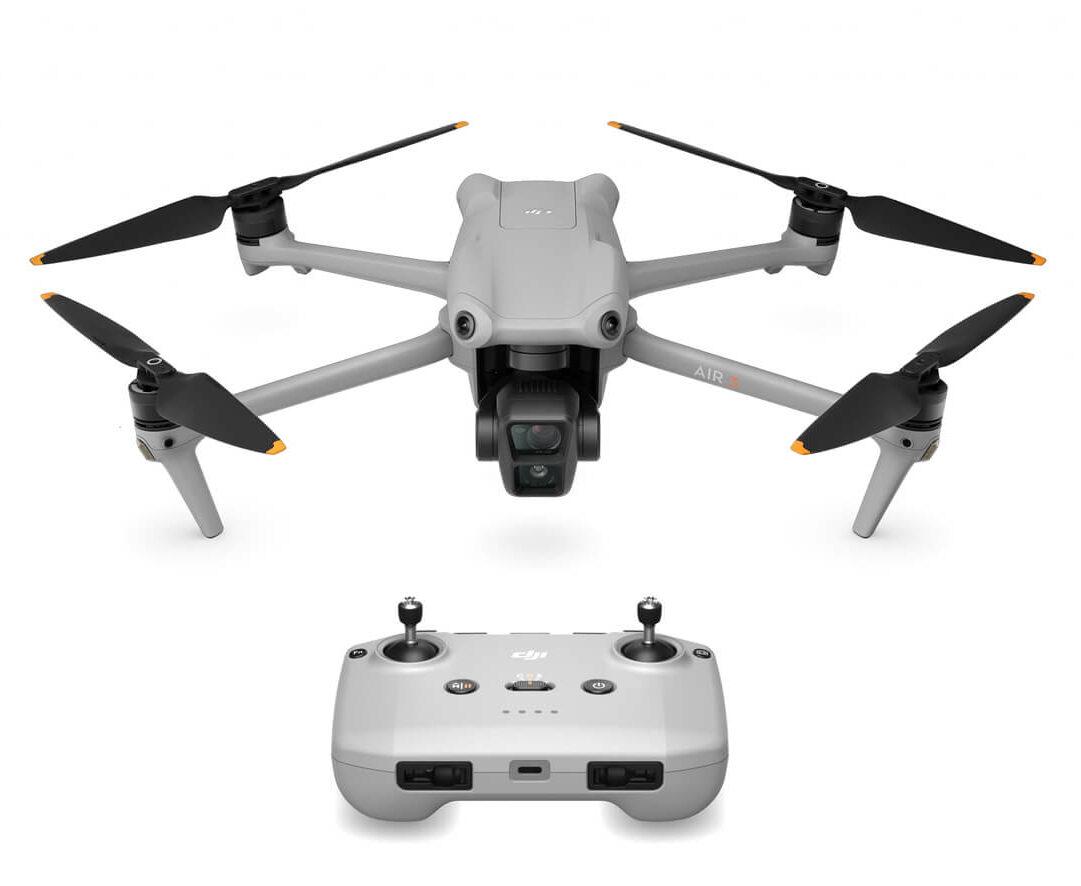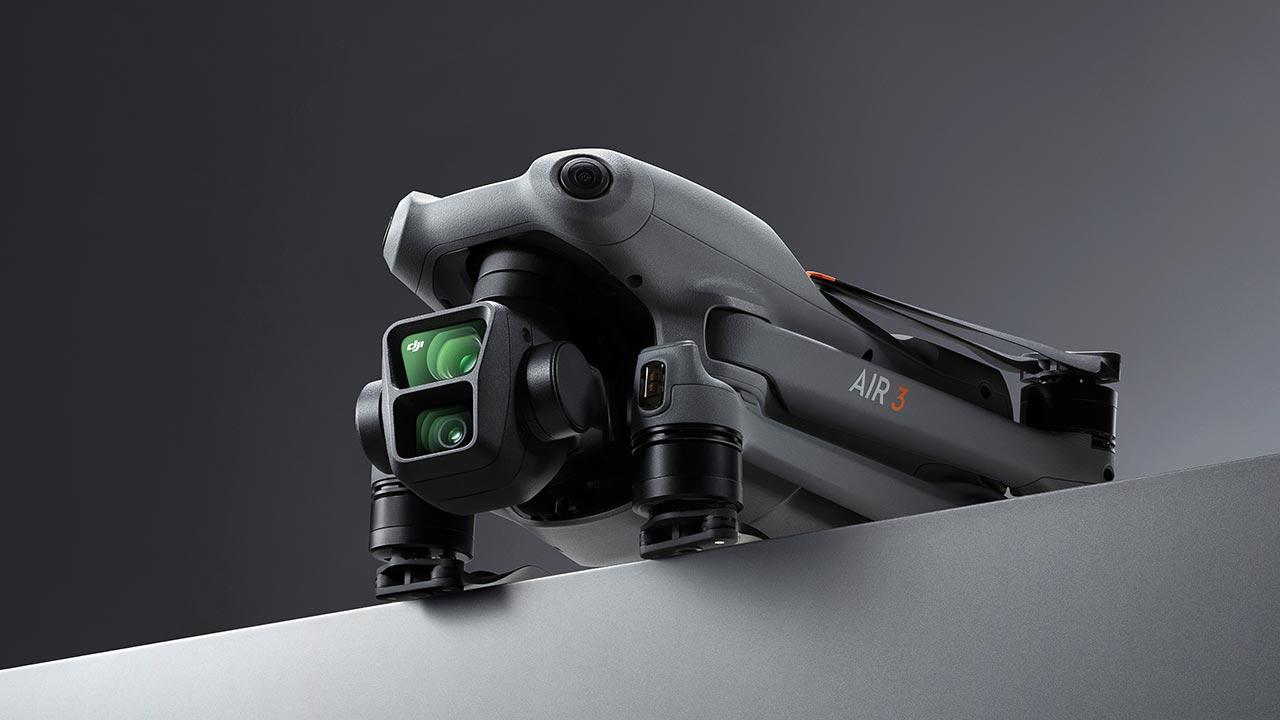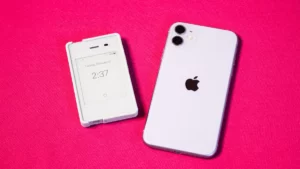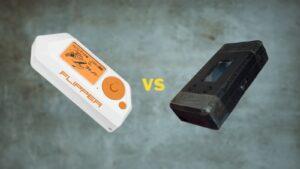DJI has recently introduced the DJI Air 3 as their latest addition to the esteemed 3-series lineup, positioning it as the natural successor to the Air 2S. Designed to bridge the gap between the Mavic 3 Pro and the Mini 3 Pro in terms of features and price, this drone boasts remarkable hardware and sensor advancements compared to its predecessor, the Air 2S. Despite having a smaller sensor and two three-quarter-inch cameras instead of one one-inch camera, the Air 3 delivers remarkably enhanced image quality. Furthermore, its increased weight and impressive 46-minute flight time make it an enticing upgrade from the Air 2S.
In this article, we will delve into the hardware and sensor comparison, image quality analysis, camera functionality, second camera evaluation, photography capabilities, color profile and exposure balancing, and active track feature of the DJI Air 3. We’ll explore how these features work together to make the Air 3 a significant improvement over the Air 2s and why it’s worth considering for your next drone purchase.
Key Takeaways
- The DJI Air 3 is a powerful new drone with dual cameras, a 46-minute maximum flight time, and a maximum speed of 47 miles per hour.
- With a range of 20 kilometers, 4K HDR video recording, and updated obstacle-tracking technology, this drone is perfect for exploring new places and capturing stunning footage.
- Despite having a smaller sensor and two three-quarter-inch cameras instead of one one-inch camera, the DJI Air 3 produces better image quality than its predecessor, the Air 2s.
- The addition of a second camera is a significant upgrade, providing a 3x zoom and 70-millimeter look that is very useful for filming.
- The Air 3’s color profile and exposure balancing are a massive breath of fresh air, providing a natural look that is more appealing than the Air 2s.
Pricing and Controller
If you’re looking for a drone that can capture wide shots and close-ups in a single shoot, the brand new DJI Air 3 with the RCN2 controller is perfect for you. This drone is equipped with dual cameras, making it feel like two drones in one. The DJI Air 3 is priced at $1099, which is a great deal considering its impressive features.
The DJI Air 3 has a maximum flight time of 46 minutes with a new lion battery, which is perfect for long shoots. It also has a maximum speed of 47 miles per hour with no wind, making it a speedy drone that can keep up with any fast-moving subject. The total takeoff weight is 720 grams, making it easy to carry around with you.
The RCN2 controller is included with the DJI Air 3 and has a 20-kilometer (12-mile) range, which is perfect for those who want to capture footage from a distance. This feature has made the FPV community very excited to see what’s happening in the future.
The DJI Air 3 also has 4K HDR video with 60 frames per second recording, which is perfect for capturing stunning images. The newly updated Actor Track 5.0 with 360-degree omnidirectional sensing allows users to take this drone to places they never would have been able to film before.
The DJI Air 3 can shoot 48-megapixel JPEG and DNG RAW photos at 82 degrees and a 35-degree field of view, which makes this camera really impressive. We’re excited to see what else DJI has to offer this year and hopefully, an O4 unit for the FPV community will follow.

Hardware and Sensor Comparison
Air 3 Vs Air 2s
We were initially surprised to learn that the sensor in the Air 3 is smaller than the one in the Air 2s. The Air 2s had a one-inch sensor, while the Air 3 has two three-quarter-inch sensors. However, after using the Air 3 extensively, we can confidently say that the image quality is not compromised in any way. In fact, the Air 3 manages to produce better images than the Air 2s, even though it has less hardware. We have side-by-side comparisons to prove this.
The Air 3 also has a second camera that is almost equally powerful, which is a big deal. Both cameras shoot in 10-bit D-log M, which is cool, but they are only 4K instead of 5.4K. The obstacle avoidance is better, and the flight time is now 46 minutes, which is huge. The Air 3 is heavier than the Air 2s, but we think the improved features more than make up for it.
Explore the TOP 5: Best Waterproof FPV Drones in 2023 for a comparison between DJI’s drones, including the Air 2S, Mavic Air 2, Mini 2, Mavic 3, and Mavic 2 Pro. Find the perfect drone for your needs.
Air 3 Vs Mini 3 Pro
One of the most surprising things about the Air 3 is that it has a better image than the Mini 3 Pro, which was released only a year ago. The Air 3 has two cameras, both of which shoot in 10-bit D-log M, but they are only 4K instead of 5.4K. The second camera is almost equally powerful, and it’s a big deal to have this option.
The Air 3’s color profile is a massive breath of fresh air, and the exposure balancing is much more similar to the Mini 3 Pro. The Air 2s has a better photography feature, as there is more usable stuff in a 5400 by 3600 image 20-megapixel raw photo than there is in a 12-megapixel photo, which is 4000 by 3000. However, the Air 3’s second lens option is a big deal, and we think it’s perfect.
You will be initially skeptical about the Air 3’s smaller sensor, but it manages to pull off impressive results. The Air 3’s ISO is the most recent, and it shows in the footage. The Air 3’s low light footage is much better than the Air 2s, and the same equipment is producing results that are noticeably different. We think the Air 3 is a worthy upgrade from both the Air 2s and the Mini 3 Pro.
Image Quality Analysis
Daytime Footage
You will be greatly impressed by the image quality of the DJI Air 3 during daytime footage tests. Despite having a smaller sensor than the Air 2s, the Air 3 manages to produce better image quality. The Air 2s had a one-inch sensor, while the Air 3 has two three-quarter-inch sensors. However, the Air 3’s image is richer and more appealing. Even in approaching sunset, the shadows are not lost completely. If you compare the Air 3’s footage with the Air 2s and Mini 3 Pro, and the Air 3 came out on top.
Low Light Footage
The low-light footage of the Air 3 is simply amazing. The Air 3’s footage has a lot more presence compared to the Air 2s, which barely exists at 100 ISO. The Air 3’s f/1.7 camera produces much better results, and the difference is noticeable even when compared to the Mini 3 Pro. We were completely confused by the fact that the same equipment could produce such different results. The Air 3’s exposure balancing is way better than the Air 2s, and it doesn’t give you weirdness in daylight, sunset, clouds, or any other lighting conditions. We were unable to find any spots where the dynamic range and exposure balancing were having a hard time.
In conclusion, the DJI Air 3’s image quality is impressive, and it surpasses the Air 2s and Mini 3 Pro in many ways. The color profile and exposure balancing are a massive breath of fresh air, and the second camera option is a big deal. The Air 3’s low light footage is simply stunning, and the daytime footage is rich and appealing. We highly recommend the DJI Air 3 to anyone looking for a high-quality drone that produces exceptional footage in various lighting conditions.
Camera Functionality
We were blown away by the camera functionality of the DJI Air 3. Despite having a smaller sensor than its predecessor, the Air 2s, the image quality is actually better. The Air 3 has two cameras, both with 12-megapixel sensors, which shoot in 10-bit D-log M. The second camera is a telephoto lens, which is equally powerful and useful for compressing things into one field of view.
One of the most significant improvements in Air 3 is the color profile. The Air 2s had a strange color profile that was hit or miss, and the exposure balancing was still in the guinea pig phase. However, the Air 3’s color profile is a massive breath of fresh air, and the exposure balancing is much more similar to the Mini 3 Pro. When shooting in daylight, sunset, or clouds, the Air 3 doesn’t give you the weirdness that the Air 2s did. We were impressed by how the Air 3 manages to pull off the dynamic range and exposure balancing with ease.
The Air 3 has a better image than the Mini 3 Pro and the Air 2s, according to DJI. In low light, the Air 3’s image is significantly better than the Air 2s, and even the Mini 3 Pro. You will be confused by how the same equipment could produce such different results, but Air 3’s recent ISO is likely the reason for the improvement.
The Air 3’s second camera is a game-changer. It’s perfect for spotting something that’s far away, and the 3X 70 mm look is very useful. The Air 2s is better for photography, with its 20-megapixel raw photos, but the Air 3’s second camera option makes up for it. We also appreciated the 10-bit D-log M, which makes color grading much easier.
Second Camera Evaluation
We were pleasantly surprised by the addition of a second camera on the DJI Air 3. It may not have the same resolution as the Air 2s, but the second camera is almost equally powerful and shoots in 10-bit D-log M. This is a big deal because it allows for better compression of two fields of view, making it easier to work with a painting instead of a fisheye.
During your filming, you will find yourself using the second camera a lot. It’s not a feature you might initially think you need, but you will quickly become dependent on it. It will be particularly useful when you need to spot something far away or when you want to capture a 3X 70 mm look. The second camera will be perfect for compressing things into one field of view, making it a very handy tool.
You will also be impressed by the fact that the second camera is equally powerful as the main camera. This will be a big deal because it will allow for more flexibility when filming. The second camera is a three-quarter-inch sensor, which is smaller than the one-inch sensor on the Air 2S, but you won’t find that to be an issue. In fact, the Air 3 will manage to get a better image out of the smaller sensor, even over the Mini 3 Pro, which was released just a year ago.
Photography Capabilities
Prepare to be blown away by the photography capabilities of the DJI Air 3. While the Air 2s boasts a higher megapixel count, you’ll be delighted to discover that the Air 3’s enhanced color profile and exposure balancing result in much more appealing photos.
You’ll find the Air 3’s 12-megapixel cameras more than sufficient for most photography needs. The improved signal and d-log M 10-bit shooting will also aid in capturing more detail and a wider dynamic range in your photos.
It’s worth noting that the Air 2s might still be a superior option for those who prioritize photography over videography. The 20-megapixel raw photos produced by the Air 2s are hard to beat, and the lack of a second camera on the Air 2s may not be a dealbreaker for some photographers.
For more camera comparisons and insights on which device suits digital nomads in 2023, check out our comprehensive guide: “DJI Pocket 2 vs. Other Cameras“
Flight Time and Battery
The DJI Air 3 comes with a new lion battery that provides an impressive maximum flight time of 46 minutes. This is a significant improvement from its predecessor, making it one of the best drones in the market in terms of flight time.
The battery is also easy to replace, which means that you can quickly swap it out and continue flying, ensuring that you don’t miss any important shots. Additionally, the battery has been designed to be lightweight, which helps to reduce the overall weight of the drone, making it more agile and easier to handle.
With the DJI Air 3, you can fly confidently, knowing that the drone will keep you informed about the battery level. The drone has a built-in battery management system that monitors the battery’s status and lets you know when it’s time to return home.
In terms of charging time, the DJI Air 3’s battery takes approximately 90 minutes to charge fully. This means that you can quickly get back to flying after a short break.
Overall, the DJI Air 3’s impressive flight time and battery performance make it an excellent choice for anyone looking for a reliable and long-lasting drone. With its new lion battery, you can fly for longer and capture stunning footage without worrying about running out of power.
Speed and Weight
The DJI Air 3 is an exciting new drone that has just been released. One of the most impressive features of this drone is its speed and weight. With a maximum speed of 47 miles per hour, the DJI Air 3 is one of the fastest drones on the market. This makes it perfect for capturing fast-moving action shots or for getting to your filming location quickly.
In addition to its speed, the DJI Air 3 is also impressively lightweight. With a total takeoff weight of just 720 grams, this drone is easy to transport and maneuver. This makes it perfect for filming in tight spaces or for taking on the go.
The DJI Air 3 is also equipped with a new lion battery that provides an impressive 46-minute maximum flight time. This means you can spend more time filming and less time worrying about recharging your drone.
Overall, the DJI Air 3 is an exciting new drone that is perfect for anyone looking to capture stunning aerial footage. With its impressive speed and lightweight design, this drone is sure to impress even the most demanding filmmakers. So, if you’re looking for a high-quality drone that can keep up with your fast-paced lifestyle, the DJI Air 3 is definitely worth checking out.
Dual Camera Feature
The DJI Air 3 is an impressive drone that comes with a dual camera feature. This feature allows you to capture wide shots and close-ups in a single shoot, making it kind of like two drones in one.
With the dual camera feature, you can take stunning pictures and videos from different angles and perspectives. The drone comes with 48 megapixel JPEG and DNG RAW photos at 82 degrees and a 35-degree field of view, which makes the camera really impressive.
Moreover, the DJI Air 3 has 4K HDR video with 60 frames per second recording, which ensures that you capture every detail of your footage. This feature is perfect for those who want to create stunning videos and images.
Overall, the dual camera feature of the DJI Air 3 is an exciting addition to the drone’s capabilities. It allows you to capture stunning pictures and videos from different angles and perspectives, making it perfect for both professionals and hobbyists alike.

Color Profile and Exposure Balancing
When it comes to the color profile and exposure balancing of the DJI Air 3, we are blown away by the improvements over its predecessor, the Air 2s. We have always been hesitant to recommend the Air 2s due to its inconsistent color profile, which could result in some footage looking fantastic while other footage looked strange and unnatural. However, with the Air 3, DJI has made massive strides in this area, and we are thrilled with the results.
The exposure balancing on the Air 3 is much more similar to the Mini 3 Pro, which is a significant improvement over the Air 2s. We have not come across any situations where the dynamic range and exposure balancing are struggling, which is a significant improvement over many of DJI’s past drones. Additionally, the new color profile is a breath of fresh air, and we have found it to be much more consistent and natural-looking than the Air 2s.
We will find that shooting in the 10-bit D-log M profile on the Air 3 gives us a look that we prefer over the normal profile in extreme lighting situations. The color profile and exposure balancing are much more accurate in the D-log M profile, which makes color grading a breeze. However, the normal profile is still excellent, and you will find that it is suitable for most situations where you don’t want to spend a lot of time color grading.
Range
The new DJI Air 3 has a confirmed range of 20 kilometers (12 miles), making the FPV community very excited about what the future holds. With this impressive range, you can take the drone to places you never would have filmed before.
The Air 3 is equipped with a dual-camera system, allowing you to get wide shots and close-ups in a single shoot. It has a maximum speed of 47 miles per hour with no wind and a total takeoff weight of 720 grams. The drone has an impressive 46-minute maximum flight time, thanks to its new lion battery.
The Air 3’s camera is also impressive, with 4K HDR video and 60 frames-per-second recording capabilities. You can shoot 48-megapixel JPEG and DNG RAW photos at 82 degrees and 35-degree field of view, which makes this camera really impressive.
Video Quality
When it comes to video quality, the new DJI Air 3 does not disappoint. With 4K HDR video and 60 frames per second recording, you can capture stunning, high-quality footage that will impress even the most discerning viewers.
The dual cameras on the Air 3 allow you to get both wide shots and close-ups in a single shoot, making it like having two drones in one. The 48-megapixel JPEG and DNG RAW photos at 82 degrees and 35-degree field of view make this camera really impressive.
Overall, the video quality on the DJI Air 3 is top-notch and will help you capture stunning, cinematic footage that you can be proud to share with your audience.
Obstacle Tracking
If you’re looking for a drone that can navigate through tight spaces with ease, then the DJI Air 3 is the perfect choice for you. With its newly updated Obstacle Tracking 5.0, the drone can sense obstacles 360 degrees around it, making it easier to fly in challenging environments.
The Obstacle Tracking 5.0 system uses 10 sensors to detect obstacles, including infrared sensors and cameras. This allows the drone to detect obstacles in front of it, behind it, and even above and below it. The system is so advanced that it can even detect obstacles that are transparent, such as glass.
One of the most impressive features of the Obstacle Tracking 5.0 system is its ability to avoid obstacles automatically. If the drone detects an obstacle in its path, it will automatically adjust its flight path to avoid the obstacle. This means that you can focus on capturing stunning footage without worrying about crashing your drone.
In addition to obstacle avoidance, the Obstacle Tracking 5.0 system also allows the drone to fly in a straight line, even if there are obstacles in its path. This is achieved through the use of the Forward Vision System, which uses two cameras to create a 3D map of the environment around the drone. This allows the drone to fly in a straight line, even if there are obstacles in its path.
Active Track Feature
The DJI Air 3 boasts one of its most exciting features, the Active Track, which allows you to draw a square over any object on the screen, automatically prompting the drone to follow it. Even while using Smart features with Active Track, collision sensors remain active, ensuring obstacle avoidance while tracking the object.
With Active Track’s impressive smooth and accurate tracking capabilities, it excels at effortlessly following subjects in motion, adapting to quick turns flawlessly, and ensuring a collision-free flight experience through reliable obstacle detection.
A remarkable highlight of Active Track is its ability to simplify filming, letting the drone handle navigation while users focus on capturing captivating shots without simultaneous piloting. The addition of FocusTrack keeps you or your subject easily in the center of the frame, while the 3x medium tele camera unlocks spatial compression, making subjects stand out.
Moreover, the Air 3 supports using the tele lens in Active Track, granting the freedom to track subjects from a distance. This proves incredibly useful for capturing side-profile shots, especially from low angles, as you can maintain a considerable distance using the 70 mm lens compared to the 24 mm lens. This opens up opportunities for more creative and versatile shots in various scenarios.

Future Expectations
You must be excited to know what DJI has in store for the future after the recent release of the DJI Air 3. With the impressive features of the Air 3, we can only expect more innovative drones from DJI in the coming years.
One thing we can hope for is an O4 unit for the FPV community. The confirmation of the DJI04 with a 20-kilometer range has already made the FPV community excited. An O4 unit will be a great addition to the FPV community as it will provide more options for pilots.
We can also expect more updates to the Actor Track feature. The newly updated Actor Track 5.0 with 360-degree omnidirectional sensing allows users to take the drone to places they would never film before, such as forests or tight spaces. With more updates, we can expect even better tracking capabilities and more creative filming options.
In terms of camera capabilities, we can expect even better quality and higher resolutions. The DJI Air 3 already boasts 4K HDR video with 60 frames per second recording, and 48-megapixel JPEG and DNG RAW photos at 82 degrees and 35-degree field of view. With more advancements, we can expect even better image quality and more options for photographers and videographers.




